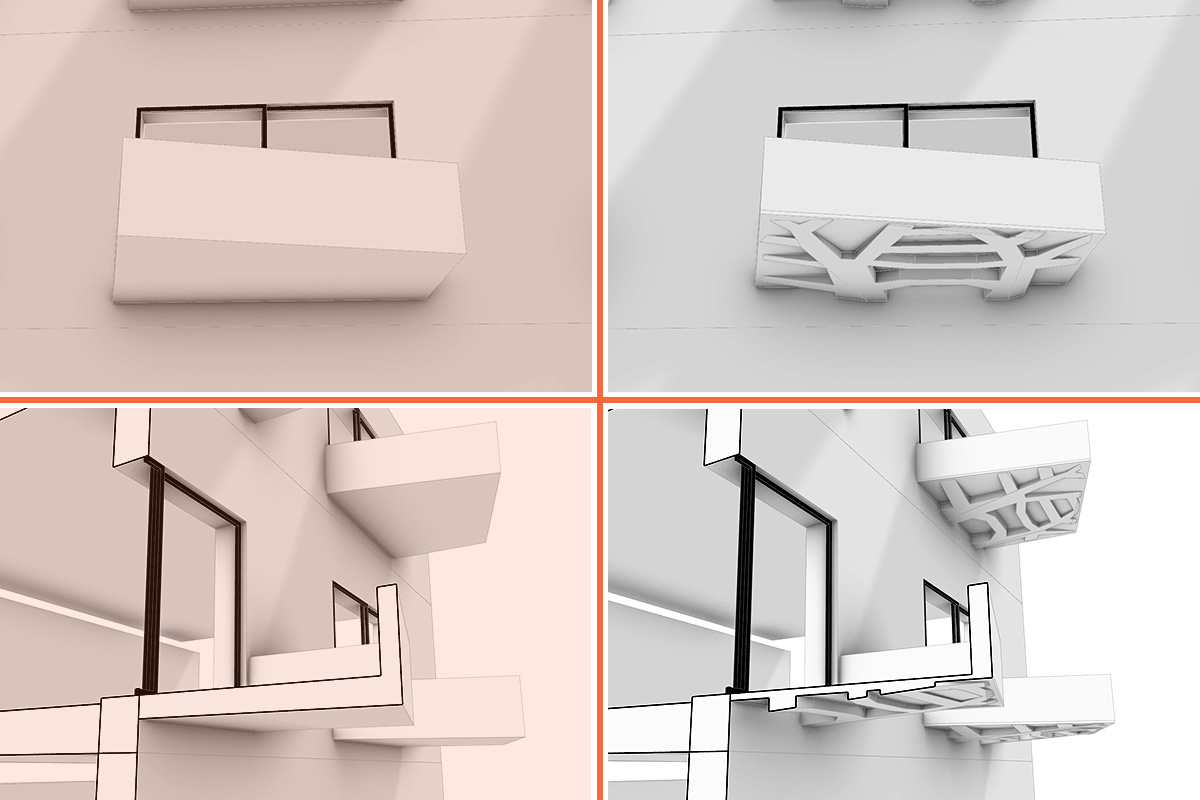#Concrete Aeditor #Technologies & Trends
Concrete and sustainability: When less is more
In focus: The carbon footprint of concrete and effective strategies of minimizing it in the production of concrete components.

Building, roads, bridges, tunnels: Concrete is versatile, robust, durable and relatively inexpensive. Thanks to its high density, it also has great thermal insulation and sound insulation properties. All of this makes concrete one of the most important and successful building materials we have at our disposal. At the same time, it is hard to ignore its environmental footprint which becomes more and more problematic and requires response and solutions from the industry.
Natural but finite
It is often argued that concrete is a natural product. This is indeed the case – if we ignore any additives used to adjust material properties, all essential components occur naturally: Concrete is made from cement, water, sand and gravel. The binding agent cement, in turn, consists of limestone, clay, and marl (a type of rock aggregate).
However, the whole truth is that these raw materials are finite resources whose extraction, production and transport are energy-intensive and associated with significant environmental impacts. This is especially true for the two main components sand and gravel, which together make up about 80 percent of concrete. Sand in suitable grain size is becoming increasingly scarce and is extracted with difficulty. The open sand deposits of the world’s great deserts are too fine for concrete production and therefore unsuitable as a rule. The extraction of sand and gravel in gravel pits also represents a significant intervention in the landscape, so that in Germany, for example, hardly any new pits are approved due to their negative effects.
Cement and the CO2 dilemma
The production of cement, an indispensable component of concrete production, is even more problematic in terms of energy consumption and CO2 emissions: the amounts of energy required to crush the rock, and, more significantly, to heat the cement to about 1,450 °C are enormous. Considering the CO2 footprint, the challenge is compounded by the fact that switching to environmentally friendly, renewable energy sources will not completely solve the problem. Only one-third of the emissions are fuel emissions, while two-thirds of the carbon dioxide emissions from cement production are process emissions related to raw materials. These occur while burning the limestone, when geogenic CO2 is converted to atmospheric CO2 and thus released into the environment.
Vital and problematic in equal measure – what’s to be done?
Realistically speaking, there will be no alternative to concrete in the foreseeable future. The building material is widespread and almost irreplaceable due to its unique properties. However, concrete also offers great potential for CO2 reduction. For the effective reduction of the carbon dioxide footprint, two approaches are particularly effective:
- A significant reduction in consumption and
- The use of novel concrete mixtures, such as recycled concrete.
When developing Concrete Aeditor and its enabling technology RSP (Robotic Shotcrete Printing), our focus has been on holistic automation right from the start. Because in concrete component production, automation can leverage significant improvements in terms of sustainability, productivity and safety.
1. Reducing CO2 through significant material savings
The formwork-free RSP process not only saves materials and costs by eliminating the time- and labor-intensive production of formwork. 3D printing also enables the implementation of optimized component geometries that reduce the concrete requirement to what is structurally and functionally necessary. In common formwork-intensive components, material savings of up to 30 percent can be achieved. Savings of this magnitude have considerable positive effects: less use of concrete and cement conserve resources and energy consumption during extraction and transportation to the factory. A lower cement consumption also directly reduces CO2 process emissions during cement production. Additionally, lower component weights after production mean less energy is required for transportation to the construction site and on-site installation.
2. Reducing CO2 with new clinker-efficient cements and novel concrete mixes
Science and research bodies are also working tirelessly on new ways to produce concrete in an environmentally friendly way. In addition to less energy-intensive burning processes and attempts to bind the carbon produced during cement burning, the use of recycled construction debris in concrete production is one of the most promising strategies. Concrete Aeditor is not only designed to process these newly created concrete mixes but can be a great asset for supporting and promoting their testing and introduction through fully digitized manufacturing processes. The automated mixing and dosing technology allows for a finely tuned manufacturing process that can be controlled in realtime. The printing of the components is also monitored and documented with sophisticated sensor technology. Valuable information can be obtained from the data collected, allowing for a steep learning curve in the introduction of new concrete mixes. The fully digitized and automated process also offers substantial advantages when it comes to quality assurance and traceability.
Conclusion
Concrete Aeditor is much more than just an innovative robot-assisted 3D concrete printer. It has the potential to become a powerful incubator for sustainable and thus future-safe concrete component production. Contact us if you want to make your concrete component production more sustainable and efficient in your factory.
